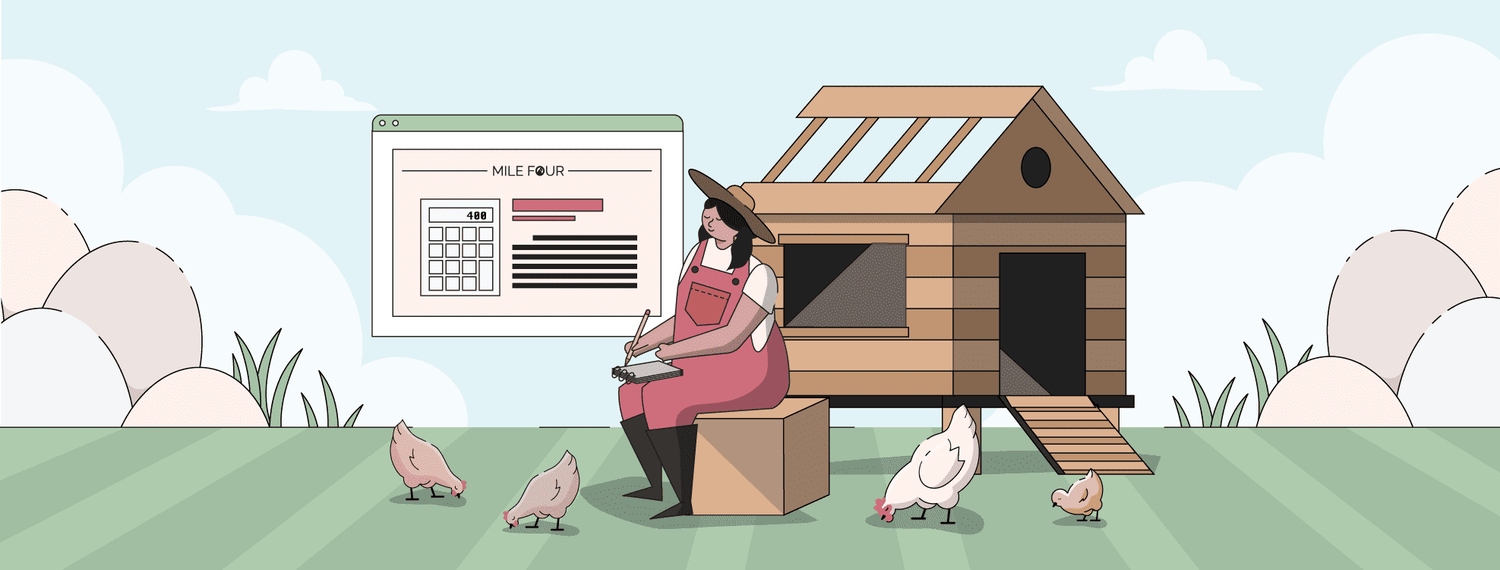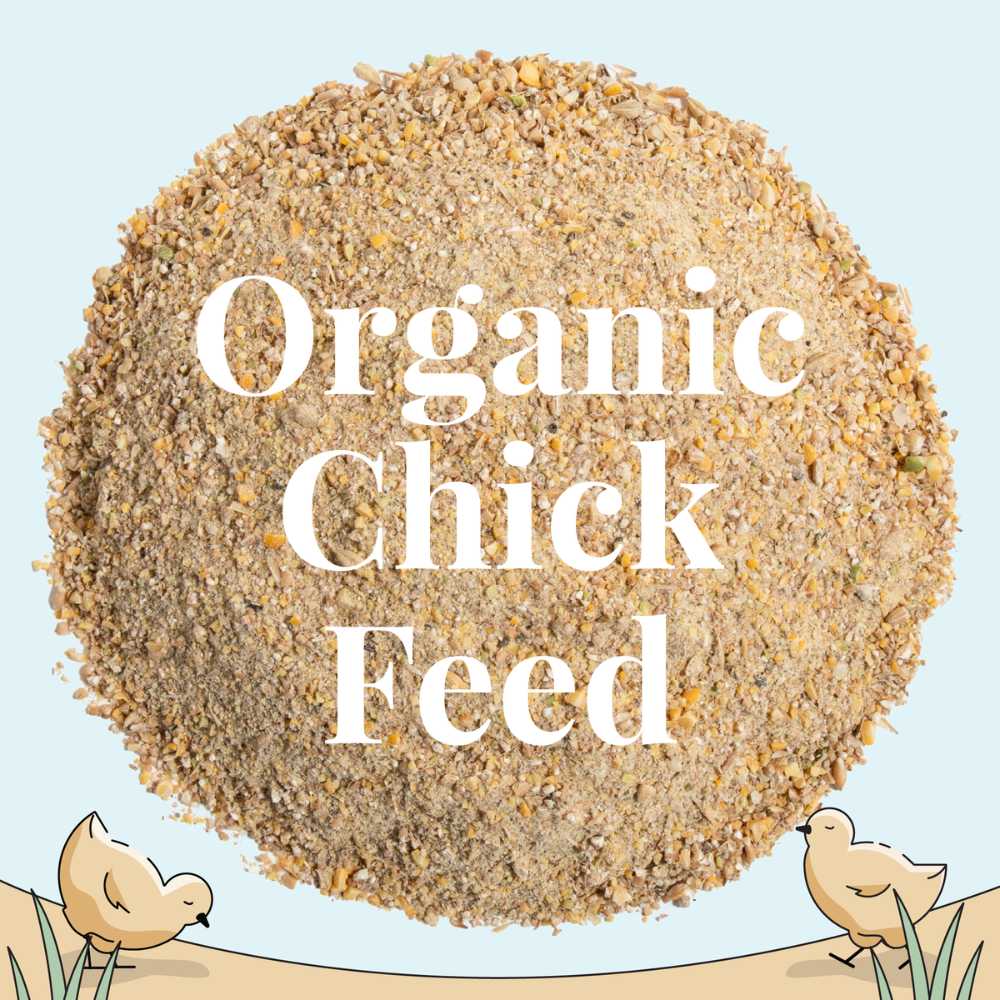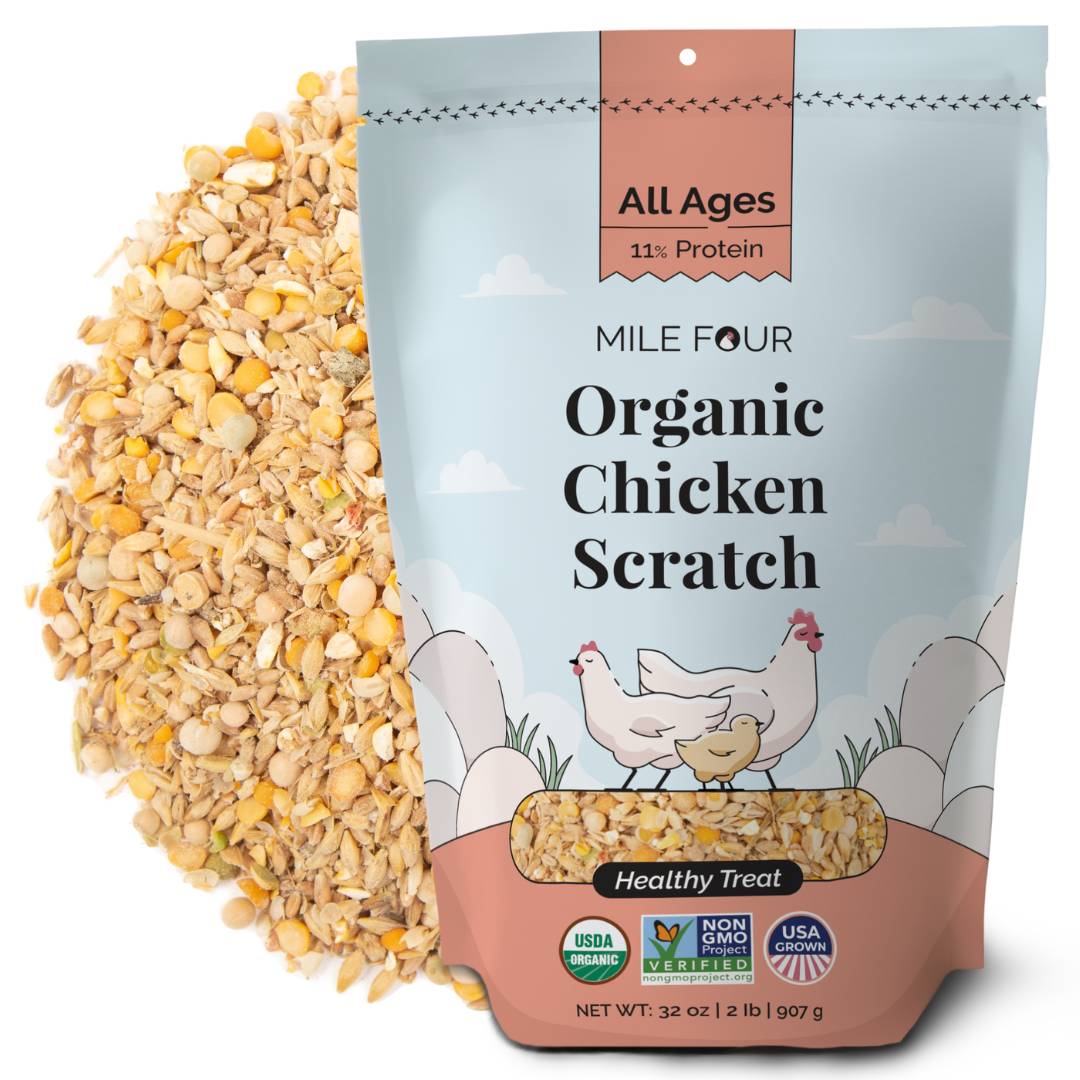The Ameraucana Chicken is the second USA bred bird in our list!
Bred for its wonderful blue eggs, the Ameraucana is perfect for a beginner backyard chicken keeper as well as the very experienced, so let’s get right to it!
Quick Ameraucana Chicken Facts
| Origin | USA |
| Colors | Black, buff, white, blue, blue wheaten, silver, brown-red and wheaten |
| Weight | 5.5 - 6.5 lbs. |
| Lifespan | 7 - 8 yrs. |
| Rate of Lay/yr. | 180 - 200 eggs |
| Egg size | Medium |
| Egg Color | Blue (and sometimes green) |
| Heat Hardy | Yes |
| Cold Hardy | Tolerant |
| Broodiness | Occasional |
| Disease Susceptibility | None |
| Temperament | Docile |
| Beginner friendly | Yes |
| Cost to purchase | $3.50 |
Quick Jump
Chapter 1: Appearance of Ameraucana Chickens
Chapter 2: History of Ameraucana Chickens
Chapter 3: Ameraucana Chickens for Sale
Chapter 4: Ameraucana Chicken Egg Laying
Chapter 5: Ameraucana Chicken Health Issues & Care
Chapter 6: Ameraucana Chicken Temperament
Chapter 7: Feeding Ameraucana Chickens
Chapter 8: Coop & Run Size for Ameraucana Chickens
Chapter 9: Pros & Cons of Ameraucana Chickens
Chapter 10: Ameraucana Chicken FAQs
Chapter 1: Appearance of Ameraucana Chickens
Ameraucana chickens are quite distinct birds, not only because of their beautiful blue eggs!
They’re very pretty, with beards and muffs that make their faces a little puffy.
Their red pea comb means they can tolerate cold temperatures very well, since the pea comb rarely gets frostbitten.

Share this Image On Your Site
Ameraucana Chicken Size
Ameraucana hens are on the lighter side of the average chicken and weigh in around 5.5 lbs.
Ameraucana roosters are around 6.5 lbs. and both are considered “light fowl.”
Because they are considered light fowl, the bantam variety of Ameraucanas are tiny!
They will weigh in at no more than 1.5 lbs. for a hen and will barely touch 2 lbs. for a male bantam.
Colors
Ameraucanas come in eight, yes EIGHT, different colors that are currently recognized by the American Poultry Association.
These are:
Outside of these, there are a number of unofficial Ameraucana colors that are currently not accepted by the American Poultry Association.
These colors happen as breeders experiment with the chickens they have in their flock, but are not prevalent enough for the APA to recognize them as an official color.
Chapter 2: History of Ameraucana Chickens
Ameraucana chickens are a very new breed in comparison to most of the breeds we’ve discussed in our blog previously.
The bantam Ameraucanas were accepted into the APA’s standard of excellence in 1979, with the standard Ameraucana (the one you’re probably used to) not being accepted until 1984!
They’re practically teenagers!

Share this Image On Your Site
Ameraucana Chickens Journey
The Ameraucana and the Araucana often get mixed up, and for good reason.
Ameraucana chickens were bred from the Araucanas and several other breeds in the United States.
The Araucana came from South America, and is one of the parent breeds of the Easter Egger chicken, which we also have a guide on right here.
Araucana chickens have “ear tuftedness” which is a lethal genetic condition, so breeders wanted to remove this genetic issue while keeping the blue eggs.
This genetic issue means that chicks will never hatch, and die in their shell, so it was vital that the gene was bred out.
This project started in the 1930’s, and as you read earlier, the Ameraucana wasn’t accepted into the standard of excellence for another 54 years!
It is only in the United States that the Ameraucana and Araucana chickens are separate breeds.
In the United Kingdom and Australia, for example, they are considered the same breed regardless of their differences.
Chapter 3: Ameraucana Chickens for Sale
Ameraucana Chicken Hatcheries
Like most birds, the Ameraucana doesn’t seem to have hatcheries specific to the breed.
They are, however, readily available at most of the popular online hatcheries, and if you live near one you should easily be able to find them.
An Ameraucana chicken will cost around $3.50 per bird if you were to buy more than 100, but only $4.50 per bird if you were to buy between one and five.
Availability of Ameraucana chickens usually starts around the end of January each year, and stretches through to October, which is quite typical of most chicken breeds at most hatcheries.
You’ll want to note that if it is your first time buying chicks online, they will be shipped to you with enough food to last the trip.
You will have to pick them up at the Post Office and have a member of staff watch you physically open the box to ensure they were delivered in good shape.
Should you have any problems with your delivery, most hatcheries will be happy to send you a replacement shipment.
If you need more information on purchasing chickens from a hatchery, read our Best Hatcheries Guide here!
Chapter 4: Ameraucana Chicken Eggs
If you’re reading a guide about Ameraucana chickens you’re probably here for the egg talk!
Ameraucana eggs are known for their beautiful blue shells, as well as the fact that they can lay pretty much all year round.
You may see a slow down in their laying when it’s super hot or super cold, but considering they’re quite a hardy breed, you should still get some eggs each week.
Ameraucana eggs are medium sized, so a little smaller than the ones you’ll typically get from the grocery store.

Share this Image On Your Site
Ameraucana Chicken Rate of Lay
Ameraucanas will lay up to four eggs per week, giving you around 200 per year.
Not bad for a smaller chicken!
They have been known to start laying later than a typical chicken, but this all depends on the individual.
Some have noted that Ameraucanas might not lay their first egg for seven months, but that is a bit later than the average.
Ameraucana Chicken Broodiness
The broodiness of Ameraucanas depends on the strain of the breed.
Many Ameraucana chickens are known to go broody, however, and will steal other eggs or hop on other nests to sit on other eggs when they are broody.
If one of their eggs hatches, they are known to make very attentive mothers.
If your Ameraucana goes broody and you’re reliant on their eggs, placing them into a wire cage (like a dog kennel) will take care of their broodiness pretty quickly.
They are dissuaded from broodiness a lot quicker than breeds like the Silkie, who looooove going broody.
Chapter 5: Ameraucana Chicken Health Issues & Care
Some of the best news about the Ameraucana is that they don’t really have many health issues to speak of.
This is mainly due to the selective breeding done when creating the breed.
As mentioned previously, the Araucana suffers from a genetic disorder that kills many of the chicks before they even hatch.
The breeding out of this genetic disorder meant that Ameraucanas are very happy, healthy chickens that shouldn’t have many health issues at all.
You’ll likely enjoy the company of your Ameraucana for around eight years.
Chapter 6: Ameraucana Chicken Temperament
A sure fire family chicken, the Ameraucana is a friendly and laid back soul that will be quite docile around any fellow flock member.
Despite this disposition, they aren’t likely to be a lap chicken like a Silkie or a Polish hen, as they tend to keep to themselves and stay out of trouble for the most part.
This isn’t to say that they don’t enjoy having you around, however.
They’ll certainly tolerate you and give you some lovin’ but they aren’t likely to stick around long enough for the cuddles and the pets.
Ameraucana Chickens in the Pecking Order
You’re probably thinking, based on all of this information, that the Ameraucanas are pretty low on the pecking order, right?
That’s not necessarily the case!
Ameraucanas will sit pretty comfortably in the middle of the pecking order despite their docile and friendly nature, and the fact that they’re smaller than most other chickens.
They’re very unlikely to pick on chickens that are lower down on the pecking order, though.
As we mentioned, they like to keep to themselves and can usually be found foraging out in the yard.
Chapter 7: Feeding Ameraucana Chickens
Ameraucana chickens don’t have any specific dietary needs, meaning you’ll be fine feeding them what you feed the rest of your flock.
Chicks will need a 21% Starter Feed, which you can purchase right here! They will eat Starter from the day they’re born until they are around 8 weeks old.
Once they’re 8 weeks old, you’ll want to switch them to a 18% Grower Feed, which you can also purchase right here!
Grower is fed to pullets from 8 weeks all the way up to when they lay their first egg.
Once their first egg is laid, you’ll need to switch them to a 16% Layer Feed.
You guessed it. You can purchase Layer Feed right here!
It should be noted that it might take a little longer for Ameraucanas to lay their first egg, and in some cases it can be upwards of 30 weeks until you see it.
Keeping them on their grower feed until this time is perfectly fine.
This Layer Feed will be the main source of nutrition for the rest of their lives, but you can add in treats like Scratch, or Oyster Shell to aid in egg production.
Chapter 8: Coop & Run Size for Ameraucana Chickens
Ameraucana chickens won’t need any special coop setup like a Brahma chicken does.
They’re small enough where you’ll just need four square feet per bird inside the coop.
You may even be able to get away with a little less, but only if they are able to free range all day in your yard.
If they’re confined to the coop and the run a majority of the time, you’ll need four square feet per bird.
A standard sized nesting box (12 in. x 12 in.) will suffice for Ameraucanas.
If you build larger boxes, you might find that multiple birds will start to nest in the same box, which leads to broken eggs.
You definitely don’t want these eggs to break!
As for their run, you’ll notice pretty quickly that Ameraucanas love to roam.
They need a decent amount of space because they don’t do very well with confinement.
If you don’t have the facilities to allow them to free range, then you’ll want to make sure you have at least eight square feet of space per Ameraucana inside the run, and preferably more just to be safe.
Even if you are able to provide them with a larger run, we still recommend allowing them to free range and forage a couple of times a week.
You will really notice their personalities start to come out when you allow them this time to find their own food and stretch their legs.
If you’re worried about predators, don’t be!
Ameraucanas are very predator savvy, so free ranging shouldn’t be a problem at all, as they’ll easily find their way back to safety if they need to.
Chapter 9: Pros & Cons of Ameraucana Chickens
| Pros | Cons |
| Beginner friendly | Can be expensive in some cases |
| Blue eggs | Average egg production |
| Don't often go broody | Mature slower than the average chicken |
| Good with kids | Don't do too well when they can't free range regularly |
| Good in hot and cold temperatures | Sometimes hard to find a "true" Ameraucana chicken |
Chapter 10: Ameraucana Chicken FAQs
Q: How many eggs will an Ameraucana hen lay per year?
A: Up to 200 eggs
Q: What color are Ameraucana eggs?
A: Ameraucana eggs are light blue
Q: Are Ameraucana chickens aggressive?
A: Despite sitting in the middle of the pecking order, Ameraucanas are docile and friendly
Q: How often do Ameraucana hens go broody?
A: Not very often at all!
Q: Are Ameraucana chickens susceptible to any diseases?
A: No, they are very hardy chickens
Summary
Ameraucanas are wonderful chickens to add to any flock.
They keep to themselves for the most part, and are friendly and independent.
Ameraucanas are quite hardy chickens, and due to breeding practices, aren’t susceptible to any diseases at all.
They will lay beautiful blue eggs at a rate of around four per week, and barring anything out of the ordinary, they’ll be a valued member of your flock for around eight years!









